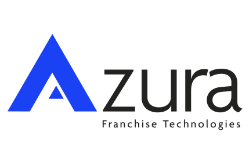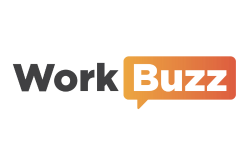Do you measure your social’s engagement? If so, are you seeing healthy engagement? If not, Paul Clegg, from Coconut, explains what might be happening, and how you can improve this in 2022.
How are your posts doing, online? Do you see the benefit of the time spent to create content, or are you frustrated because no one sees them, so it’s pointless! If this is the case – and this will be a hard pill to swallow – you need to look closer to home: Your audience isn’t at fault.
Some brands think they need to have thousands of followers. But the number of followers is irrelevant, if you’re only having 3 or 4 of them like your content, and another 2 or 3 commenting… or even worse – none of them! One of the key things to aim for is quality, not quantity: a small, engaged audience is always better than a large number of passive followers.
What do we mean by “engagement”?
When posting content, aim to create posts people enjoy so much, they let you know. So, essentially, you’re looking for likes, comments, shares, messages and mentions. Basically, anything you’ll receive a notification about.
Putting it in a real life context, it’s like standing in front of people, and having them answer, when you ask a question. Or being part of a small group at a networking event, and having the rest of the group respond with you. How awkward is it when you say something, and no one responds to you? Tumbleweed moment!
And yet, how often do you post content online, which generates no response? Zilch. Nada. Not even from your network. #awkward! Again, your audience is not at fault: you are.
Why your audience doesn’t engage
It’s more common than you think for brands to be ignored by their followers. So, you aren’t alone. There are many reasons this might be happening, including:
Your content is wrong for your audience
Too often, content is generalised, and not aimed at anyone in particular; or it’s so niche, it’s a turn-off for those who see themselves outside your circle.
Your audience doesn’t see there’s value for them, in your content
At the end of the day – and we say this so often at Coconut – your audience uses their social media in the same way you do: to connect with others, to learn something, or to switch-off from the day. Too many brands come across as too preachy, too salesy, or too “me”.
Your audience can’t see you in your content
Authenticity is – and always will be – the key to success online. When a brand is too slick, or too perfect, people disengage. Why would they engage with someone who isn’t real; or who puts on a façade? There is such a thing as “too perfect”.
You’re posting too much, or too little, and your audience has disengaged
We’ve all been there – you start a conversation with someone and they talk… and talk… and talk… so we stop listening and move on. Or you ask someone a question, and they take so long to reply, you’ve already moved on – mentally, if not physically.
You’re posting the wrong type of content in the wrong place
A bit like trying to share your business plan at a dinner with friends, or showing a cat video to a colleague when they want to know about your goals for the next month. Know your audience, and read the room.
Increasing engagement starts with understanding
One of the biggest problems we often see, is a misunderstanding of how social media should be used – with stock images and over-generalisations the biggest culprits.
Stop trying to talk to anyone and everyone. Stop trying to only talk to your inner circle: you’re not a clique, you’re an amazing franchise with the perfect opportunity for someone looking in your direction. And trust me when I say, they’ll be watching you for months – even years – before you’re ever aware of them. So, if they disengage online, they’ll disengage offline too.
To increase engagement, it’s important to show your audience you see them. This comes from identifying who it is you’re talking to: break it down into detail. for example:
- You’re not just talking to “a mum looking to work around her children”, you’re talking to a woman in her 30’s whose children are now at school, but she wants the freedom to support their development outside of school as well as in it.
- You’re not just talking to “a man who’s hit a corporate ceiling”, you’re talking to a man in his 40’s who’s frustrated with the politics of work, and although he doesn’t want to take problems home with him, he knows he can’t fully switch-off, which is affecting his mental health, as well as his relationships.
- You’re not just talking to “a business graduate looking for work”, you’re talking to a young woman who was at the top of her class, and is looking for the right challenge, having worked in her family’s business and project-managed a change in direction when the pandemic hit.
See the differences when you break it down? Now, how would you talk to them? You wouldn’t be so general when you talk to them about the opportunity your franchise presents, you’d speak directly to where they’re at, leading them through a journey until they see the solution for themselves. You’d offer real-life examples from people within your network. You’d show them what they can achieve, rather than just tell them what might happen.
Your online content should be no different. People engage when they believe they have a genuine connection with a brand, or the opportunity. So, identifying the type of content which works best for each platform, and adapting your content accordingly, might be hard work but it will help you to connect to your true audience, in the right way, at the right time.
If you need guidance for building your social media engagement, talk to any of the Coconuts in more detail about what you can do – we’re always happy to talk strategy with you.



































